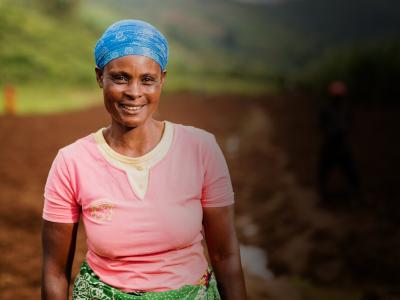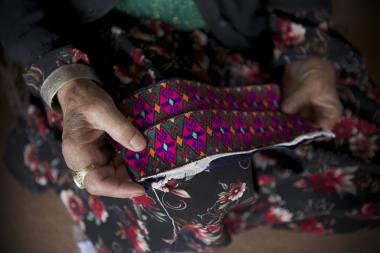Nearly twenty years ago, war erupted in Afghanistan. The United States occupied my country in an attempt to quell conflict between the Afghan government and the Taliban. Afghanistan has now entered a pivotal but highly uncertain time.
As all parties recognize that a military solution is likely infeasible, increased war fatigue has shifted Afghan and international attention towards a possible political settlement to the ongoing war. Grassroots peace movements and a three-day cease-fire between the Afghan government and the Taliban during Eid in June 2020 demonstrate Afghans’ widespread desire for sustainable peace. The United States has vowed to remove all troops from Afghanistan before May according to a settlement with the Taliban. This will leave the country in a transitory and vulnerable state and it is widely feared that this will lead to more conflict. Regardless of the circumstances, my staff and I will work this year to reach as many women as possible as they fight to protect rights they’ve gained over the course of the last two decades.
Despite restrictions caused by COVID-19, in 2021 we will enroll 1,000 new participants in our program.
Fighting COVID-19
This year, our program is undergoing several changes. As we restructure to adjust to constraints posed by COVID-19, we have merged our economic and social empowerment trainings into one module. This way, my staff and I can continue to deliver quality training to each of our participants with a reduced staff and resources that have been limited by the pandemic and ongoing conflict. At the beginning of the year, we struggled to find facilities large enough for trainings that respected proper social distancing guidelines, but we have since found areas where we can spread out and provide masks and water tanks for handwashing.
In 2020, we began training on COVID-19 and how to combat it and this training will continue as the pandemic is slowly pushed back. We provide materials with information on the disease and have hung posters with information in our facilities as a constant reminder to remain vigilant. Access to vaccines is limited in our country, but, even in the face of a third wave, all staff and participants know how to work with restrictions to continue life during the pandemic.
My staff and I have been working with the Foreign, Commonwealth and Development Office of the United Kingdom to enroll a new group of men into the program. COVID-19 delayed these plans, but soon we hope to move forward and enroll a new class for men’s engagement activities. Our twelve Community Protection Committees, led by male allies, are actively having meetings to make sure that cases of violence are addressed and otherwise prevented.
As with our peer offices in other countries, the pandemic has given us an avenue to pursue new ways to innovate and improve our programming. This year, we hope to begin projects around digitizing trainings and providing more income-generating opportunities so that participants can create sustainable income.
The Change Agent network in Afghanistan is quite active this year. As the pandemic has placed unprecedented physical and mental stress on women in our communities, the Change Agents have been working to refer women to health centers and other resources so that they can receive prompt and qualified attention when they need it most.
New Beginnings in Business
Every month, Self-Help Groups (SHGs), groups of 10 to 25 participants, convene at a member’s home to discuss savings rates and loan capacity. They cooperate to adjust savings based on the income that women have reported that month, and loans are given to members to start and grow small businesses, repair homes, and help ill family members. I’m proud to report that there has not been a loan default reported in five years. This part of our programming makes a tangible and direct impact, and we hope to improve it this year. My team and I are considering merging SHGs with Change Agent activities so that when members come together to discuss money and business practices, they can pair that with discussion around their rights and how they can use their money to find their inner power and autonomy.
Building small businesses gives women the chance to create lives for themselves and access to steady income can provide a stable platform for them to build a future for themselves and their families. We’re working with both participants and graduates to build businesses like small shops and boutiques as well as in agriculture, tailoring, and poultry. Participants are able to make products that they can then sell through small shops.
According to our 2019 data, in order to improve income-generation following graduation, we must further tailor our vocational training to markets in high demand in various communities and provinces. This year, we will conduct market research, identify new vocational tracks, and pilot new curriculums to give women skills that will last them a lifetime. My team has proposed focusing on agricultural vocations and we are currently piloting a vocation in the cultivation of high-value fruit trees. This kind of skill can give women the power to build an enterprise that will remain valuable in the future.
Growing Forward
In the next three years, we have high hopes for the growth of our program. My team recently piloted a condensed version of the program which we want to continue to use. Conflict limits women’s availability and free time to attend training, so a six-month version of the program will be tested with a group of 300 women to measure tis effectiveness.
Larger programming requires larger resources and funding. In the coming years, we want to attain sustainable support through partnerships with other organizations to provide services to participants even after they graduate. Connections with NGOs and institutional donors keeps doors and opportunities open for women as they continue to grow their businesses and reclaim their power beyond the program. We have strong partnerships with several CSOs such as AWN (Afghan Women Network), Zardozi, and AWRC (Afghan Women and Resources Centre), and we are planning to expand our programming into new communities in the future with the help of these partnerships.
Though conflict in Afghanistan is continuous and thousands of women are affected every year by poverty, food insecurity, and gender-based violence, my team and I remain hopeful that the future of Women for Women International–Afghanistan in 2021 is bright.

